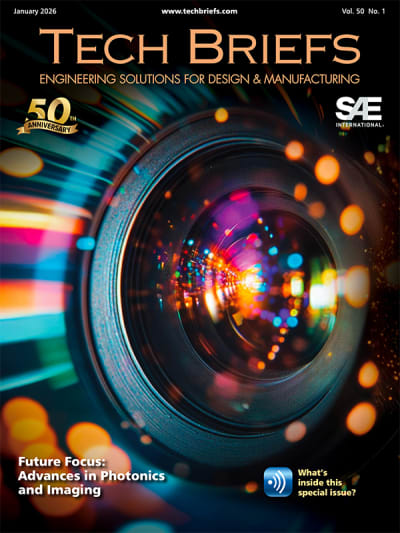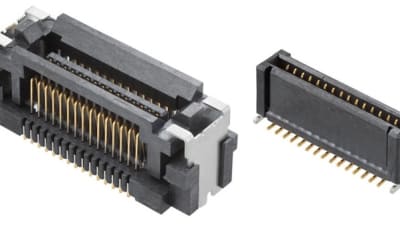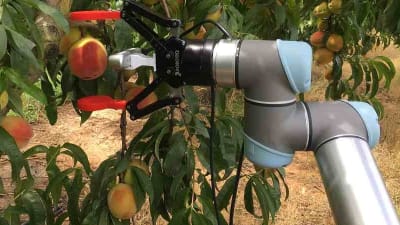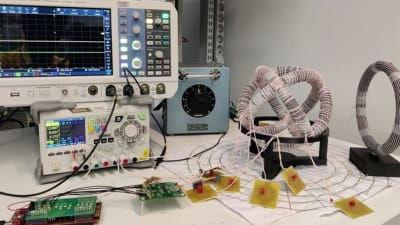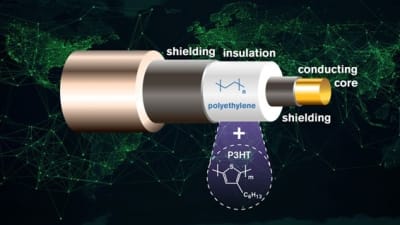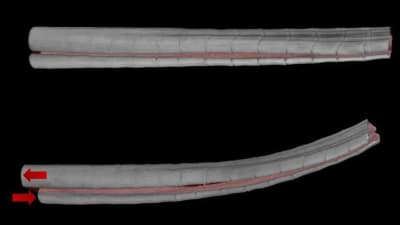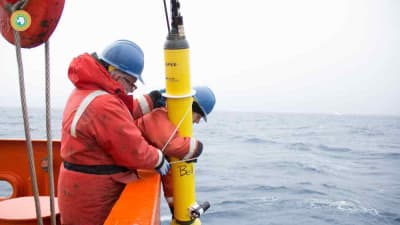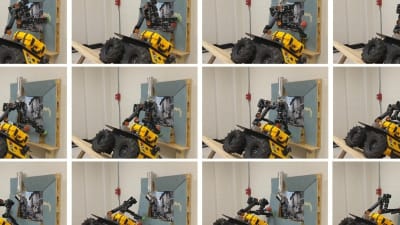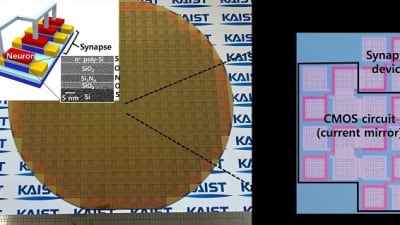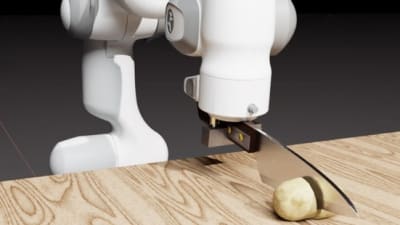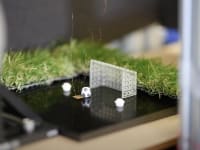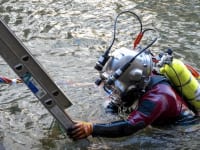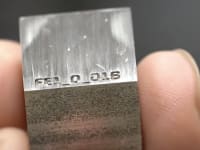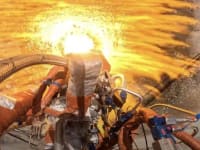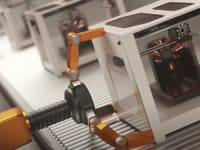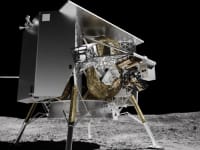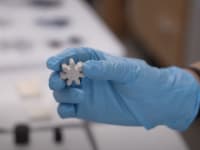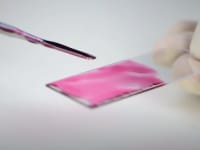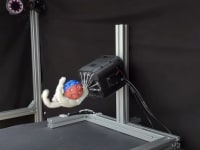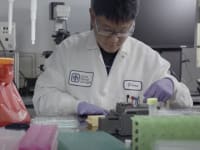61
12,105,170,194,926
-1
1050
30
Question of the Week: Energy
Will Our Buildings Store Energy Like Giant Batteries?
Our September issue of Battery Technology highlighted rechargeable cement-based batteries that can be utilized as functional concrete. The achievement from Chalmers University of Technology, according to the battery’s developers, lays the groundwork for entire buildings that could someday...
Blog: Mechanical & Fluid Systems
An industry expert explains why automotive manufacturers are turning to a "floating" board-to-board connection.
Blog: Motion Control
An intelligent robot being uses A.I. and sophisticated navigation to find good peaches and remove them from trees.
Question of the Week: Electronics & Computers
Will Stretchable Smartphones Catch On?
Our “5 Ws” feature this month highlighted skin-like electronic circuits being developed at Virginia Tech.
INSIDER: Energy
Molten sodium batteries have been used for many years to store energy from renewable sources, such as solar panels and wind turbines. However, commercially available molten sodium-sulfur...
INSIDER: Transportation
The demand for clean energy has never been higher, and it has created a global race to develop new technologies as alternatives to fossil fuels. Fuel cells are among the promising green energy technologies....
INSIDER: Electronics & Computers
While researchers around the globe are working on free-position wireless charging — which would unchain devices from set charging points — the most common solutions...
INSIDER: Energy
If we are to transition to a world powered by renewable energy, efficient long-distance transport of electricity is essential, since the supply — renewable energy...
Blog: Aerospace
With good shielding and good timing, Mars-bound astronauts are safe from radiation, according to a recent study.
Blog: Aerospace
Professor Francois Barthelat wants to incorporate the fish fin's strong, flexible characteristics into robotic and aerospace designs.
Question of the Week: Energy
Will ‘Charging Rooms’ Catch On?
Our Question of the Week focuses on today’s lead story – the creation of an aluminum test area that wirelessly powered lamps, fans, and cell phones.
Blog: Power
A team at the University of Tsukuba used a beam of microwave radiation to a launch a drone into the air. Can this type of propulsion take off?
Blog: Energy
Prof. Alanson Sample and his team want to turn entire buildings into wireless charging zones. Learn how their system delivers electricity over the air.
INSIDER: Motion Control
Engineers at MIT and Shanghai Jiao Tong University have designed a soft, lightweight, and potentially low-cost neuroprosthetic hand. The prosthetic, designed with a system for...
Question of the Week: Mechanical & Fluid Systems
Would You Use a ‘Cold Tube?’
Our August issue of Tech Briefs highlighted a technology that offers an energy-efficient alternative to the air conditioner: The Cold Tube.
Blog: Robotics, Automation & Control
Robotic floats — 4,000, in fact — are in the ocean, monitoring oxygen levels.
Blog: Robotics, Automation & Control
A new algorithm finds robots the best path across uneven terrain — and the best placement for a robot’s arms and feet.
Question of the Week: AR/AI
Does A.I. Need to Be Able to ‘Imagine?’
An INSIDER story this month highlighted efforts from USC researchers to train artificial intelligence to imagine the unseen. The artificial-intelligence system uses the attributes that it "knows" to then think up a never-before-seen object.
Blog: Manufacturing & Prototyping
Researchers from the University of Minnesota discovered a way to convert "stubborn" metals like platinum and tungsten into thin films.
Blog: Sensors/Data Acquisition
A new pressure-sensor from MIT detects small and fast changes in pressure at the fingertip, such as from lightly rubbing fingers together.
INSIDER: Semiconductors & ICs
Researchers from Korea Advanced Institute of Science and Technology (KAIST) fabricated brain-inspired highly scalable neuromorphic hardware by co-integrating single transistor neurons and...
INSIDER: Medical
A study by researchers at the Texas A&M University School of Public Health shows that inexpensive and convenient devices such as silicone wristbands can be used to yield quantitative air...
INSIDER: Sensors/Data Acquisition
When you pick up a balloon, the pressure to keep hold of it is different from what you would exert to grasp a jar. And now engineers at MIT and elsewhere have a way to precisely...
INSIDER: Design
Ultrathin, flexible computer circuits have been an engineering goal for years, but technical hurdles have prevented the degree of miniaturization necessary to achieve high performance....
Question of the Week: Software
Could Digital Twins Be Used on ‘Any System?’
An INSIDER story this month highlighted efforts to use sensors to improve the virtual design model known as a digital twin.
Blog: Nanotechnology
Researchers at North Carolina State University demonstrated a low-cost technique for retrieving — and then reusing — nanowires from electronic devices.
Blog: AR/AI
A team of researchers at USC is helping artificial intelligence imagine the unseen.
INSIDER: Robotics, Automation & Control
MIT researchers have designed a sharp-tipped robot finger equipped with tactile sensing to meet the challenge of identifying buried objects. Digger Finger was able to dig through granular media such as...
INSIDER: Robotics, Automation & Control
USC researchers unveiled a new simulator for robotic cutting that can accurately reproduce the forces acting on a knife as it slices through common food such as fruit and vegetables. The...
Top Stories
Blog: Manufacturing & Prototyping
2025 Holiday Gift Guide for Engineers: Tech, Tools, and Gadgets
INSIDER: Research Lab
Scientists Create Superconducting Semiconductor Material
Blog: Software
Quiz: Materials
Blog: Aerospace
Tech Briefs Wrapped 2025: Top 10 Technology Stories
Blog: Manufacturing & Prototyping
Webcasts
 Upcoming Webinars: AR/AI
Upcoming Webinars: AR/AI
The Real Impact of AR and AI in the Industrial Equipment Industry
 Upcoming Webinars: Motion Control
Upcoming Webinars: Motion Control
Next-Generation Linear and Rotary Stages: When Ultra Precision...
 Upcoming Webinars: Energy
Upcoming Webinars: Energy
Hydrogen Engines Are Heating Up for Heavy Duty
 Podcasts: Medical
Podcasts: Medical
How Wearables Are Enhancing Smart Drug Delivery
 Podcasts: Power
Podcasts: Power
SAE Automotive Podcast: Solid-State Batteries
